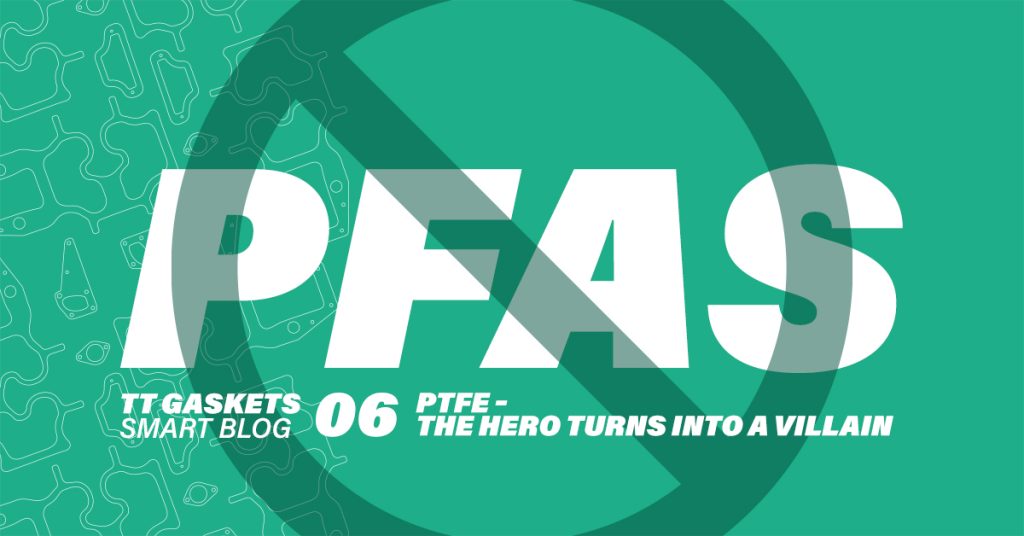PTFE – The hero turns into a villain

Great discoveries often come about by accident, and PTFE (polytetrafluoroethylene, more commonly known as Teflon™) is no exception. Since its invention in the late 1930s it has shaped all industries from frying pans to aerospace applications.
PTFE is famous for its slipperiness; thus, it’s used in kitchenware, and its chemical inertness allows it to be used for storing fluoroantimonic acid, the strongest acid known to man.
Forever chemicals for breakfast, lunch, dinner and supper
Despite PTFE’s versatile use cases, most great things often come with drawbacks. Ignorance is bliss, but it doesn’t remove the fact that PTFE is popping up in places it probably shouldn’t – especially near production and “recycling” (=incineration) sites. These undesirable places include, but are unfortunately not limited to, drinking water, soil and fauna, including us humans.
PTFE derivatives (also known as forever chemicals) found all over the globe are bundled under the term PFAS. You might recognize this abbreviation from the European Commission’s proposal to soon ban 7000 to 12000 chemicals belonging to the PFAS group.
Decades of work ahead
The health and environmental consequences of the PTFE build-up are yet to be discovered, but my layman evaluation is that they are most definitely not a part of a healthy diet. I also think that the goal of banning PFAS derivatives by the end of 2025 is unfortunately unfeasible.
It took us decades to ban leaded fuel even though the evidence of the lead build-up was clear. The same thing happened with asbestos: the health hazards were undisputed but still we continued to use it because there were no (better) alternatives.
History will hopefully repeat itself
Whether the ban comes into effect in a few years or not, we at TT Gaskets are determined to do our share in finding alternatives for PTFE.
It is true that PTFE has features that other materials do not possess, and there are applications where it is (currently) the only alternative. But when asbestos was eventually banned, it led to a disruptive development of new gasket materials that beat any then-available asbestos materials fair and square. The only change was that the materials were designed for specific circumstances whereas asbestos materials were all-around compromises.
No simple answers or solutions available
We believe that something similar will happen in the future: we would probably already know if there was an alternative that had the exact same properties as PTFE. That’s why the question of finding alternatives for PTFE is irrelevant as there will probably be hundreds of them.
The simplest thing we could do right away is to reduce the use of PTFE-based materials in applications where they are not needed. There is plenty of over-specification in gasket materials for modest environments where a fiber material would do the job just as well.
This should also be a guideline for all manufacturers who add PTFE derivatives to their recipes without thinking about its necessity and consequences. Let’s first reduce and minimize the need and use for PTFE and then think about the difficult part of replacing it in the applications where no alternatives exist yet.
We humans are stubborn but also able to learn and take responsibility, so I believe that we will solve this issue one way or another. As there is no business to be conducted on an inhabitable planet polluted by PTFE, we want to continue providing Smarter Sealing for a Safer Tomorrow – PFAS-free as soon as possible.
